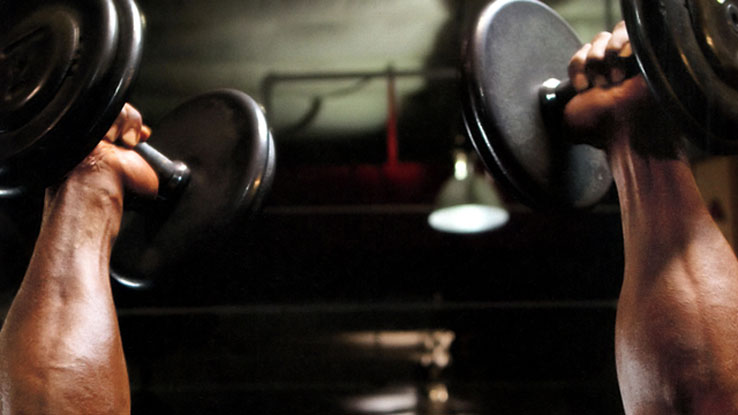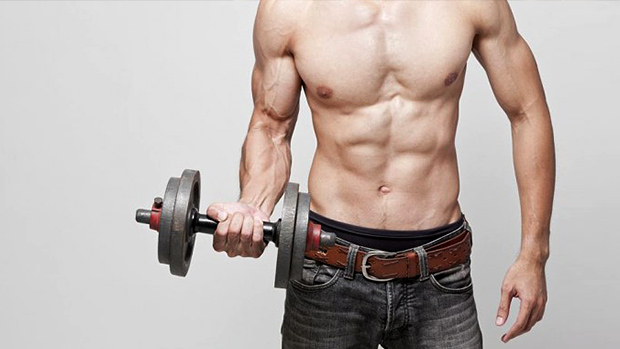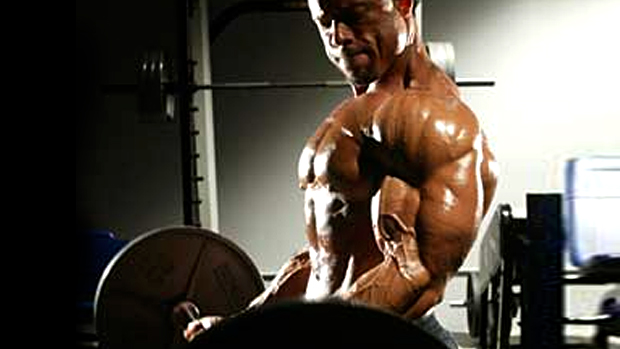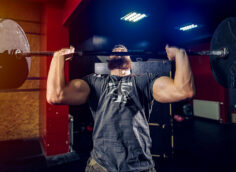There's a fine line between training as hard as your body can handle and going too far. Cross it, and your performance falters and your gains slow to a halt. Get it just right, and you'll consistently hit PRs and put out your strongest performances in the competitions that count.
Heart rate variability (HRV) helps get this balance right by illustrating how lifestyle and training affect the nervous system and one's ability to adapt to and resist stress. It's increasingly being used by some of the best athletes and coaches in the world for this reason.
To fully understand how this works and why it matters for everyone from powerlifters to military special operators, read Heart Rate Variability Training.
We gathered eight top strength coaches and PhD researchers from fields including MMA, collegiate football, powerlifting, professional team sports, and endurance to talk about what they've learned through experience about the most effective ways to use HRV.
The ensuing conversation was over twenty pages long, and we've distilled that down into the most important highlights. If you've got a question about the practical application of HRV to your training, you'll find the answer here.
Contributors
- Andrew Flatt Strength coach currently completing a Master's in exercise science while working with the strength and conditioning program at California University of Pennsylvania. Canadian National Champion in Collegiate Football (2005) and the Canadian National Champion in raw amateur powerlifting (2010).
- Joel Jamieson Strength and conditioning coach working largely with professional MMA fighters. Creator of the Bioforce HRV app.
- Simon Wegerif Biomedical engineer and entrepreneur. Owner of HRV Fit Ltd., which creates HRV measurement tools such as iThlete as well as bespoke HRV apps for companies to re-sell.
- Jonathan Pope Owner of Rogue Performance in Denver, working primarily with amateur athletes ranging from rugby players to endurance competitors.
- Patrick Ward Strength coach and licensed massage therapist in Phoenix, Arizona. Founder of Optimum Sports Performance.
- Mike T. Nelson Doctoral candidate in exercise physiology using HRV to research metabolic flexibility with a Master's in mechanical engineering (biomechanics).
- James Heathers Applied physiologist with "a bunch of normal degrees" and a research Master's involving extensive work with HRV. Current research work (and PhD) is concerned with HRV analysis as applied to psychology and non-invasive physiology.
- David Tenney Head fitness coach for the Seattle Sounders, currently beginning his fourth season using OmegaWave HRV monitoring.

Getting the Most out of HRV
Jamieson: The best use of HRV is to gauge our readiness to train on a daily and weekly basis. A level of loading that may have caused one response two months ago may cause an entirely different response if used again.
When we have more energy to adapt to training, we use higher loads. When we have less available, we train easier. In this way, we can push our bodies without triggering the protective response that leads to overtraining.
Tenney: HRV in a professional team setting helps the coaching staff create a training model for the group that allows those who are fresh enough to get adequate work to maintain and/or build fitness, while preventing those with poor HRV from becoming overloaded.
With individualized training, it's easier to optimize weekly and monthly loading. You get the ability to see which athletes need four days to recover from a game, and who can do it in two.
Balls Out Doesn't Work

Jamieson: This mentality of "go hard or go home" is idiotic and why we see so many powerlifters and weightlifters with relatively short careers and a massive amount of chronic injuries.
People want to blame exercises like squats, deadlifts, or Olympic lifts as being the problems when really it's just that people use volumes and intensities that are greater than they should be using.
Nelson: People need to be focused on performance first and foremost, even if the goal is purely hypertrophy. Monitor overload through intensity (percent of 1 rep max), volume, and density (volume/time). If you're making progress in each one of those, your body has to positively adapt.
Most training should be done in a eustress state, stress that you can easily recover from; so you'll be stopping each set when there's excess tension or any change in breathing. This is very easy for most, but your goal is to do as much work as possible as easily as you can.
Distress training is saved mostly for competition practice, like a powerlifting meet. Most people, most of the time, will be well served to do the work in the gym, but make it look easy.
Lifestyle Factors
Flatt: Travel, poor sleep, and anxiety all cause my HRV score to drop.
My morning resting heart rate is typically 60 beats per minute +/- 5. My baseline HRV score is between 77 and 80.
My highest recorded HRV score was an 87.7. The evening before was spent with family that I only see a few times a year. Being surrounded by them, eating plenty of food and relaxing had an obvious effect. Kind of heartwarming isn't it?
Ward: All the stressors in an individual's life including relationships, finances, travel, nutrition, and sleep must be taken into account as they'll rob the body of its adaptive reserve and decrease the individual's stress resistance.
Pope: I train mostly amateur athletes who have full time jobs or school. In addition to adjusting training volume and intensity, testing their HRV every day has made them more accountable for what they do outside the gym as they gain an appreciation of how impactful lifestyle factors can be.
Most of these guys love training, so when I tell them they have to back off because of what they did outside the gym they usually think twice before going out drinking or staying up until 2 A.M. playing video games.
Weekly Planning with Athletes
Tenney: After a lot of experimentation, the most effective use of HRV with my team comes from getting HRV 48 hours after every game. Playing a 90 minute professional soccer game is a considerable load, so I've found that it takes 36-48 hours until we begin to see the full "bottoming out" of fatigue in our starters.
There were times that we, by necessity, could only take a reading the day after a game, and several players would come up green, and have a fairly normal HRV. Eventually, we found that these same athletes would be more fatigued and have less optimal HRV on that second day after a game.
One bad reading on its own may not have tremendous meaning or create the need to change much. However, if we have 11 starters and through HRV we can determine that seven of the 11 have suboptimal HRV scores, then that can be powerful information to our coaching staff that we may need to alter the training for that particular week.

Baseline Measurements for Athletes
Heathers: Many athletes have waking heart rates below about 50 beats per minute. Due to the interface between frequency analysis and the signal your heart provides, these guys may get strange errors if they take their waking HRV lying down.
As Simon advocates, they need to measure their HRV either seated or standing, not supine as is advised for the general population. Naturally, regardless of the position used, be completely consistent and make sure that you give yourself at least a minute in that position before you start because your orthostatic mechanisms are still adjusting. Some reason people feel dizzy when they stand up too quickly.
Nelson: The biggest mistakes I see are directly related to this. Consistency is crucial. I have my athletes measure it at the same time, in the same state, every day.
Heathers: Another factor that can screw up measurement is water. Water in your GI tract changes your blood pressure, which is buffered by your PNS. Hence a glass of water will cause big PNS changes after a few minutes, and they'll last about 90 minutes.
This may be the reason why people who aren't technically dehydrated still seem to benefit so much from water consumption: it's a very powerful PNS stimulus.
Bladder filling is another one. In my experiments, I always insist people go to the toilet first. They think it's weird, but I get much more consistent data that way.
Injury and Illness
Flatt: In the image above you can see my HRV scores from mid-August up until the end of mid January. You can see the massive drops from when I got sick in December and my drop in HRV from the travel and emotional stress from my grandmother's funeral in early October, which also happened to be the same day I hurt my back. You can also see in January my spike in HRV from spending time with family that I rarely see.
HRV Reflecting Recovery
Flatt: Upon moving to PA for grad school and working with the S&C staff, I had to participate in weekly conditioning sessions. The first few destroyed me. My HRV the morning after my first session was 66 and my heart rate was 84. Each week thereafter my HRV score would be less affected until eventually very small drops occurred. HRV reflected this immense stress on my body and the progressive adaptation to it.
Jamieson: While HRV can only provide modest clues about what type of exercise you need most, it's very good at answering the question of how much exercise you need. This is because HRV provides insight into the processes of adaptation that are constantly going on and can give us information about how much stress is appropriate to use at a given time.
Nelson: I think of HRV as a way to tell how much gas is in your tank. Another analogy would be money in the bank. How you use it is up to you.
Tenney: People often use terms like state of readiness, recovery, or adaptive ability when discussing the role of HRV assessments. I think these are all rolled into one.
HRV and Performance
Flatt: I was curious to see if my strength would be better on days where HRV was high or if strength would suffer when HRV was low. I haven't seen these associations. I do, however, believe that training harder when HRV is high and backing off when HRV is low will yield better adaptation and decrease risk of injury.
Jamieson: HRV is a good general indicator of performance within limits. If someone's HRV is hugely outside their normal ranges, either up or down, it's likely that you'll see decrements in their overall performance. On these far outside the norm readings, their bodies are clearly not in a position to effectively respond to a huge load of stress, which is what just about every competitive event is.
This doesn't necessarily mean, however, that we can exactly "predict" performance using HRV because there are so many factors involved in any competition. At the most, we can identify athletes that are well outside their norms that are unlikely to perform well and we can find those that are in the right ranges for optimal performance.
Flatt: This is a huge point for coaches. If one of your stud athletes has a red indication, get him out of harm's way for that day. Don't put him in full contact drills and so forth. It seems that risk of injury is heightened when HRV is poor.
HRV and Soft Tissue Therapy
Ward: Soft tissue therapy can improve an athlete's stress resistance by allowing them to tolerate greater training loads and recover more quickly from competition.
A number of papers have looked at changes in HRV following a few different types of massagetechniques – trigger point therapy, Rolfing, joint manipulation, and Thai massage.In all instances, massage helped to increase HRV, indicating a move towards a parasympathetic state.(16,17) One even looked specifically at using soft tissue therapy to effectively speed HRV recovery following intense exercise.(19, 20)
Another study found an improvement in HRV following a period of static stretching.(18) Of course, it's important to individualize stretching just as one would with any other component of a training program.
Day-to-Day Training Modifications
Pope: If my score is lower than usual, but not alarmingly so, I don't alter my training plan unless I have an important training day that can't be easily moved in the next day or so.
If my score is really low, I'll do a recovery type session (either low intensity aerobic or low intensity strength work and mobility circuits) instead of just taking the day off. This helps my HRV bounce back to baseline and I feel better subjectively as well.
When I don't get enough sleep, under eat, or sleep poorly due to stress or too much caffeine and have to back off or skip a training session, I usually pay the price on harder training rides later on.
This is motivating because it's no fun to struggle for hours knowing that it wouldn't have been so bad had I been able to do the training that I should have.
Jamieson: For the most part, HRV should be used to make minor adjustments. If you get to the point that someone has to make huge changes to their program, you weren't using HRV correctly in the first place.
Recovery Workouts
Ward: If HRV indicates that I need to modify a training day, I use one of several options:
- Lower the training volume for the day (just drop the total number of sets, but keep everything else the same).
- Lower the intensity for the day (same sets x reps, but just with lighter loads).
- Scrap the workout and go to a workout of low intensity bodyweight or med ball circuits.
- Scrap the workout and go to an easy bike ride in the 120-140bpm range.
- Scrap the workout and go with soft tissue work and an easy mobility session.
Those are on a continuum based on the severity of the HRV score (amber or red) and how the individual feels.
Additionally, I tend to err more towards the methods on the lower part of that list if it's the day after a competition and the athlete has to compete 2-3 days later as I want to push them towards a more recovered state as quickly as I can.
Flatt: After some experimentation, performing 20 minutes of light aerobic work between workouts enhances my recovery and leads to smaller day-to-day fluctuations in HRV.
Heathers: For recovery days, I've settled on something very simple – one movement. Usually something big and rigid, like a power clean or a jerk. Start at 30-50%, sets of three until the motor pattern feels "natural." Go up very slowly, 5% or 5kg (10 pound) increments. No assistance exercises. Above all, stay calm. Don't rage out, piss yourself, shake the bar, etc. Just enjoy the movement. If a few triples at 60-70% hurt, you need a doctor. Or a morgue attendant.
Nelson: The best thing I've found to increase my HRV is to take two days off – just very light movements and dynamic work, a 20 minute fasted walk in the morning if possible and then the third day I do one heavy compound exercise with a short circuit of five exercises done back to back.
Nutrition
Flatt: Over spring break I ate garbage all week and my HRV decreased each day throughout the week until I resumed my normal eating patterns, at which point it immediately climbed back up. My sleep was good and stress levels low, so this was likely due to inflammation caused by the processed junk foods.
Nelson: There are many associative studies showing a minor link between Omega 3 status and HRV levels.(3,4,5,6) Anecdotally, I've noticed that when my fruit and veggie intake is above normal my HRV tends to come up the next day.
No More Planned Deloads
Flatt: I no longer deload every fourth week, which I've been doing for over the past three years. Instead, I just back off on the days that HRV is low.
Currently I'm in the fourth week of a new cycle and my HRV has begun to decline, so I've adjusted accordingly. Clearly my body has not adapted to this length of a cycle and it is reflected in my HRV.
HRV and Caffeine
Wegerif: Before I read a study about HRV and caffeine, (7) I was expecting that caffeine would reduce HRV and increase HR. But this turns out not to be the case, as the study came to the clear conclusion that 240mg. of caffeine produced a marked increase in HF (parasympathetic) HRV for about an hour. This is more in line with a view of coffee as a pleasant social relaxant than as a 'fight or flight' stimulant.
Heathers: The research is a mess, and that makes sense for three primary reasons: 1) coffee / caffeine sensitivity is extremely variable between people, and 2) caffeine is an adenosine receptor antagonist, which means it has very nonspecific effects, and 3) the research is all over the place as far as experimental control and quality is concerned.
Certainly, there's no good evidence that coffee / caffeine screws up your autonomic activity in general, which is what I think most people are concerned with.
Wrap Up
Got any other questions about HRV and how to best put it to use? Many of the most knowledgeable coaches in the world on the subject took part in this article and would be happy to continue the discussion in the LiveSpill.
References
- Sandercock G, Gladwell V, Dawson S, Nunan D, Brodie D and Beneke R. Association between RR interval and high-frequency heart rate variability acquired during short-term, resting recordings with free and paced breathing. Phys. Meas. (2008) 29(7):795Ð802.
- Uusitalo AL, Uusitalo AJ, Rusko HK. Heart rate and blood pressure variability during heavy training and overtraining in the female athlete. Int J Sports Med. (2000) Jan;21(1):45-53.
- Christenson et al 2010 Cell Mol Biol. N-3 fatty acids and cardiac autonomic function in humans 2010 Feb 25; 56(1):131-9.
- Valera et al 2011 Int J Circumpolar Health. Influence of n-3 fatty acids on cardiac autonomic activity among Nunavik Inuit adults. 2011 Feb;70(1):6-18. Epub 2011 Feb 17.
- Christenson, JH. Omega-3 polyunsaturated Fatty acids and heart rate variability. Front Physiol. 2011;2:84. Epub 2011 Nov 16.
- Christensen JH, Schmidt EB. Autonomic nervous system, heart rate variability and n-3 fatty acids. J Cardiovasc Med (Hagerstown). 2007 Sep;8 Suppl 1:S19-22.
- Hibino, G., Moritani, T., Kawada, T., & Fushiki, T. (1997). Caffeine enhances modulation of parasympathetic nerve activity in humans: Quantification using power spectral analysis.The Journal of Nutrition,127(7), 1422-1427.
- Yeragani, V. K., Krishnan, S., Engels, H. J., & Gretebeck, R. (2005). Effects of caffeine on linear and nonlinear measures of heart rate variability before and after exercise. Depression and Anxiety, 21(3), 130-134. doi:10.1002/da.20061
- Sondermeijer, H. P., van Marle, A. G., Kamen, P., & Krum, H. (2002). Acute effects of caffeine on heart rate variability. The American Journal of Cardiology, 90(8), 906-907.
- Monda, M., Viggiano, A., Vicidomini, C., Viggiano, A., Iannaccone, T., Tafuri, D., & De Luca, B. (2009). Espresso coffee increases parasympathetic activity in young, healthy people. Nutritional Neuroscience, 12(1), 43-48. doi:10.1179/147683009X388841
- Nishijima, Y., Ikeda, T., Takamatsu, M., Kiso, Y., Shibata, H., Fushiki, T., & Moritani, T. (2002). Influence of caffeine ingestion on autonomic nervous activity during endurance exercise in humans. European Journal of Applied Physiology, 87(6), 475-480. doi:10.1007/s00421-002-0678-1
- Rauh, R., Burkert, M., Siepmann, M., & Mueck-Weymann, M. (2006). Acute effects of caffeine on heart rate variability in habitual caffeine consumers. Clinical Physiology and Functional Imaging, 26(3), 163-166. doi:10.1111/j.1475-097X.2006.00663.x
- McPartland JM, Simons DG. Myofascial Trigger Points: Translating Molecular Theory into Manual Therapy. J Manual & manipulative Therapy 2006; 14(4): 232-239.
- Shah JP, Gilliams, EA. Uncovering the biochemical milieu of myofascial trigger points using in vivo microdialysis: An application of muscle pain concepts to myofascial pain syndrome. JBMT 2008; 12: 371-384.
- Shah JP, et al. An in vivo microanalytical technique for measuring the local biochemical milieu of human skeletal muscle. J Appl Physiol 2005; 99: 1977-1984.
- Delaney JP, Leong KS, Watkins A, Brodie D. The short-term effects of myofascial trigger point massage therapy on cardiac autonomic tone in healthy subjects. Journal of Advanced Nursing 2002; 37(4): 364-71.
- Takamoto K, Sakai S, Hori E, Urakawa S, Umeno K, Ono T, Hisao N. Compression on trigger points in the leg muscle increases parasympathetic nervous activity based on heart rate variability. Journal of Physiological Science 2009; 59: 191-197.
- Farinatti PT, Brandao C, Soares PP, Duarte AF. Acute effects of stretching exercise on the heart rate variability in subjects with low flexibility levels. J Strength Cond Res 2011; 25(6): 1579-85.
- Arroyo-Morales M, Olea N, Ruiz C, del Castilo Jde D, Martinez M, Lorenzon C, Diaz-Rodriguez L. Massage After Exercise Ð Responses of Immunological and Endocrine Markers: Single-Blind Placebo-Controlled Study. J Strength Cond Res. 2009 Mar;23(2):638-44.
- Arroyo-Morales M, Olea N, Martinez M, Moreno-Lorenzo C, Díaz-Rodríguez L, Hidalgo-Lozano A. Effects of Myo-Fascial Release After High Intensity Exercise: A randomized Clinical Trial. J Manipulative Phisol Ther. 2008;31(3):217-23.





